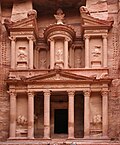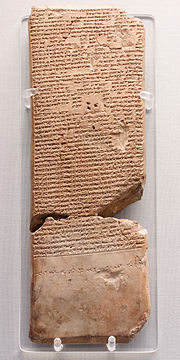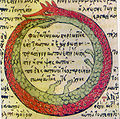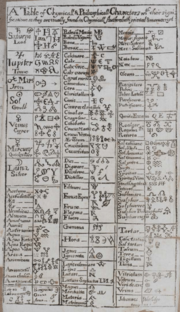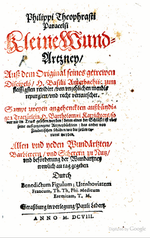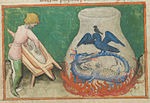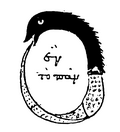The Nabataean Agriculture (Arabic: كتاب الفلاحة النبطية, romanized: Kitāb al-Filāḥa al-Nabaṭiyya, lit. 'Book of the Nabataean Agriculture'), also written...
46 KB (5,666 words) - 17:18, 20 October 2024
Ibn Wahshiyya (category Alchemists of the medieval Islamic world)
the Nabataean Agriculture (Kitāb al-Filāḥa al-Nabaṭiyya), an influential Arabic work on agriculture, astrology, and magic. Already by the end of the tenth...
17 KB (1,882 words) - 09:44, 8 November 2024
al-Shām). The Nabataeans of Iraq were strongly associated by their Muslim overlords with agriculture and with a sedentary way of living, as opposed to the nomadic...
11 KB (1,368 words) - 16:32, 20 October 2024
The Nabataeans or Nabateans (/ˌnæbəˈtiːənz/; Nabataean Aramaic: 𐢕𐢃𐢋𐢈, NBṬW, vocalized as Nabāṭū) were an ancient Arab people who inhabited northern...
48 KB (5,594 words) - 13:44, 10 November 2024
Sabians (section Sabians of the Quran)
The Jewish scholar Maimonides (1125–1204) translated the book The Nabataean Agriculture, which he considered an accurate record of the beliefs of the...
44 KB (5,013 words) - 20:59, 29 August 2024
Ibn al-'Awwam (category Botanists of the medieval Islamic world)
read the Geoponica and the Nabataean Agriculture. Ibn al-Awwam's book is divided into thirty-four chapters. The first thirty deal with crops and the last...
6 KB (761 words) - 18:53, 30 October 2024
Petra (category Nabataean architecture)
Tfd›Greek: Πέτρα, "Rock"), originally known to its inhabitants as Raqmu (Nabataean: 𐢛𐢚𐢒 or 𐢛𐢚𐢓𐢈, *Raqēmō), is a historic and archaeological city...
88 KB (9,460 words) - 15:33, 20 November 2024
the introductory section of the Nabataean Agriculture text. The book, which was written or translated into Arabic by the Aramaic writer Ibn Wahshiyya...
106 KB (13,901 words) - 10:11, 12 October 2024
Al-Tighnari (category Botanists of the medieval Islamic world)
referred to the tree with one of its fruits." He follows the techniques described in The Nabataean Agriculture closely, though he does not follow the theosophical...
15 KB (1,843 words) - 16:35, 21 November 2024
Emerald Tablet (redirect from The Secret of Hermes)
The Emerald Tablet, the Smaragdine Table, or the Tabula Smaragdina is a compact and cryptic Hermetic text. It was a highly regarded foundational text for...
74 KB (7,944 words) - 07:15, 22 October 2024
25:4, Exodus 26:1, et al. Amar (2007), pp. 32, 51–52; citing The Nabataean Agriculture (Kitāb al-Filāḥa al-Nabaṭiyya), by Ibn Wahshiyya. "Tiny 3,800-year...
19 KB (2,371 words) - 01:55, 24 October 2024
in KV62, the tomb of Tutankhamun, in the 14th century BCE. The text concerns the actions of Ra and his union with Osiris in the underworld. The ouroboros...
33 KB (3,806 words) - 03:04, 18 November 2024
Philosopher's stone (redirect from The Philosopher's stone)
giving them their longevity. The legend of the stone was also compared to the biblical history of the Temple of Solomon and the rejected cornerstone described...
29 KB (3,287 words) - 20:21, 17 November 2024
Magnum opus (alchemy) (category Pages using the JsonConfig extension)
In alchemy, the Magnum Opus or Great Work is a term for the process of working with the prima materia to create the philosopher's stone. It has been used...
6 KB (620 words) - 01:34, 15 August 2024
and "of the moon", through the 17th century. The tradition remains today with the name of the element mercury, where chemists decided the planetary...
14 KB (1,067 words) - 02:46, 29 August 2024
النَّبَطِيَّةُ; al-ʿimarah al-nabatiyyah) refers to the building traditions of the Nabateans (/ˌnæbəˈtiːənz/; Nabataean Aramaic: 𐢕𐢃𐢋𐢈 Nabāṭū; Arabic: ٱلْأَنْبَاط...
121 KB (15,741 words) - 01:36, 24 October 2024
transit area. The ancient history of the Negev includes periods of Egyptian and Nabataean dominance, the rise of local cultures such as the Edomites, and...
100 KB (11,618 words) - 06:49, 29 October 2024
Nessana (redirect from Nitzana (Nabataean city))
ancient Nabataean city located in the southwest Negev desert in Israel close to the Egyptian border. It started by being a caravan station on the ancient...
8 KB (788 words) - 11:13, 25 October 2024
Panopolis, the alembic was invented by Mary the Jewess. The anbik is described by Ibn al-Awwam in his Kitab al-Filaha (Book of Agriculture), where he...
6 KB (561 words) - 10:24, 22 October 2024
Chaldean Oracles (redirect from Julian the Chaldean)
Nabataeans of Iraq, a term used by Arabic authors as a synonym of 'Chaldean' in (pseudo-)historical and philosophical contexts Nabataean Agriculture,...
12 KB (1,621 words) - 15:08, 10 September 2024
Secretum Secretorum (redirect from The Book of the Secret of Secrets)
The Secretum Secretorum or Secreta Secretorum (Latin for "secret of secrets"), also known as the Sirr al-Asrar (Arabic: كتاب سر الأسرار, lit. 'The Secret...
9 KB (1,058 words) - 06:56, 22 October 2024
Al-Jawf Province (section Agriculture)
the last Nabataean King Rabbel II died and the Nabataean Kingdom was conquered by the Roman Emperor Trajan and turned into Arabia Petraea. The former Qaderite...
65 KB (6,993 words) - 03:13, 30 October 2024
medical movement based on the theories and therapies of Paracelsus. It developed in the second half of the 16th century, during the decades following Paracelsus'...
7 KB (671 words) - 12:00, 22 January 2024
Athanor (category Wikipedia articles incorporating a citation from the 1728 Cyclopaedia)
Arabic texts of the period of the Caliphate which use the term "al-tannoor" in talismanic alchemy, meaning a bread-oven, from which the design portrayed...
3 KB (391 words) - 14:27, 23 October 2024
disease. The perfection of the human body and soul was thought to result from the alchemical magnum opus ("Great Work"). The concept of creating the philosophers'...
115 KB (13,362 words) - 14:37, 14 November 2024
the term chrysopoeia (from Ancient Greek χρυσοποιία (khrusopoiía) 'gold-making') refers to the artificial production of gold, most commonly by the alleged...
3 KB (268 words) - 08:09, 20 November 2024
Mary or Maria the Jewess (Latin: Maria Hebraea), also known as Mary the Prophetess (Latin: Maria Prophetissa) or Maria the Copt (Arabic: مارية القبطية...
13 KB (1,450 words) - 17:42, 22 October 2024
The following outline is provided as an overview of and topical guide to alchemy: Alchemy – A philosophical tradition recognized as protoscience, that...
9 KB (723 words) - 11:44, 30 October 2023
Ahmad ibn 'Imad al-Din (category Alchemists of the medieval Islamic world)
in the 11th century. He was the author of an alchemical treatise titled On the Art of the Elixir (or Fi sina‘at al-iksir) which is preserved in the National...
2 KB (161 words) - 16:03, 30 October 2024



